#Graphic Design: A Guide to Crafting Visual Storytelling
Explore tagged Tumblr posts
Text

Graphic Design: A Guide to Crafting Visual Storytelling
Graphic design is a dynamic and creative field that plays a pivotal role in visual communication. This introduction sets the stage for understanding the significance of graphic design, its applications, and its impact on conveying messages through visuals.
Fundamental Concepts of Graphic Design
Delving into the fundamentals, this section explores the essential concepts that form the backbone of graphic design. From typography and colour theory to layout and composition, understanding these principles lays the groundwork for effective visual communication.
How Design Communication Works & Visual Storytelling
Graphic design goes beyond aesthetics; it is a form of communication. This section delves into how graphic design communicates messages effectively and explores the art of visual storytelling. From conveying emotions to guiding the viewer's eye, graphic design plays a crucial role in narrative construction.
Career in Graphic Design
A career in graphic design opens doors to diverse opportunities. This section explores the various paths one can take in the field of graphic design, from working with design agencies to freelancing. It also touches upon the range of industries that value the skills of graphic designers.
Why a Degree in Graphic Design
The decision to pursue a degree in graphic design is significant. This section outlines the reasons why individuals should consider formal education, emphasising the depth of knowledge, hands-on experience, and industry exposure gained through a degree program. Specifically, it explores why Lakhotia Colleges Certificate in Graphic Design is a valuable choice, highlighting the benefits and career exposure it offers.
Conclusion
In conclusion, graphic design is a powerful tool for visual storytelling, and its impact extends across various industries. Whether one is embarking on a career or considering a degree, the world of graphic design holds immense possibilities. This section summarises the key insights, encouraging individuals to explore the exciting and ever-evolving realm of graphic design for both personal and professional growth.
0 notes
Text
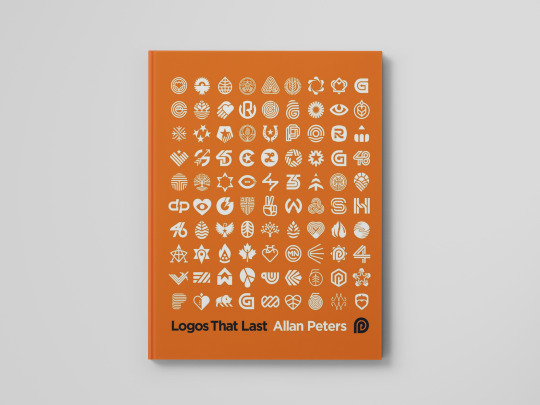

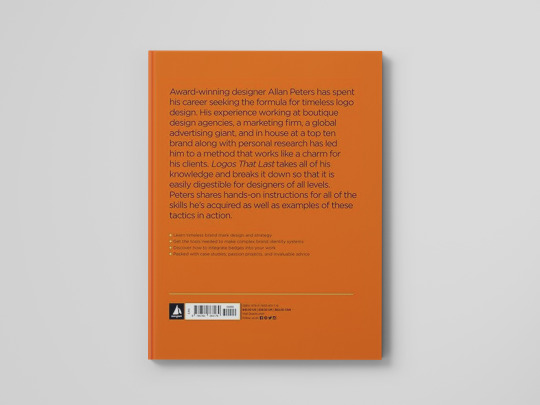

Author name: Allan Peters
Book title: Logos That Last: How to
Create Iconic Visual Branding
Pages: 208 pages
Year of Publication: 2023
Publisher: Rockport Publishers
About the Author:
Allan Peters is a notable designer and author, recognized for his work in graphic design, branding, and typography. He has a strong presence in the design community, particularly known for his contributions to visual identity and user experience design. Peters has worked with various high-profile brands and has a distinct style that often blends modern aesthetics with a touch of retro influence.
About the Book:
"Logos That Last: How to Create Iconic Visual Branding" by Allan Peters is a comprehensive guide focused on the principles and practices of effective logo design. The book aims to equip designers with the tools and insights necessary to create memorable and enduring brand identities.
Introduction
In the introduction, Allan Peters shares his journey as a designer and the motivations behind writing the book. He emphasizes that a successful design career relies on dedication, passion, and continuous learning, rather than just innate talent. Peters illustrates how each project enriches a designer's understanding of branding, highlighting the iterative nature of the design process.
He advocates for lifelong learning and engaging with diverse disciplines to enhance creativity and problem-solving. By merging personal experiences with industry insights, Peters inspires both novice and seasoned designers to embrace their craft. Ultimately, he asserts that dedication and a commitment to growth can lead to the creation of logos that resonate with audiences and stand the test of time, fostering iconic visual branding.
Chapter 1: What Makes a Logo Last?
This chapter explores the essential elements that contribute to the longevity of iconic logos. Peters identifies three factors beyond the designer's control—timeline, marketing budget, and product quality—and seven controllable elements: personal passion, visual beauty, originality, functionality, colour, memorability, and simplicity. He explains how these factors come together to create logos that stand the test of time.
Chapter 2: Brand Mark Process
Peters outlines his unique and meticulous six-week logo design process. He emphasizes the importance of client education and a clear methodology to ensure successful outcomes. This process includes thorough research, brainstorming, sketching, and refinement, culminating in a logo that is both effective and enduring.
Chapter 3: Inspiration Hunting
In this chapter, Peters advocates for sourcing inspiration beyond digital platforms. He encourages designers to explore antique stores, estate sales, and small-town museums to discover timeless and unique designs. This approach enriches a designer's work and helps avoid the homogenization often seen in the design community.
Chapter 4: Badge Design Process
Peters challenges the conventional dismissal of badge designs, arguing for their versatility and rich storytelling potential. He explains how to create modular brand systems that include badges, enhancing a brand's identity and making it more memorable.
Chapter 5: Brand Extensions
Peters discusses the importance of integrating brand elements across all design aspects. By incorporating the core elements of a brand mark into patterns, icons, custom typography, and illustrations, designers can maintain strong branding without needing overly prominent logos.
Chapter 6: Brand Evolution
Rather than starting from scratch, Peters highlights the strategic benefits of evolving existing logos to retain brand equity. He provides examples of how subtle refinements can enhance a logo's design while preserving its familiarity and recognition.
Chapter 7: The Shop
During the 2020 pandemic, Peters leveraged his passion for design by creating an online shop. He shares insights into merchandise design and the creative process behind his products, demonstrating adaptability and entrepreneurial spirit.
Chapter 8: Case Studies
Peters presents real-life projects to illustrate how his principles and processes can be applied to various clients' needs and budgets. Each case study showcases the creation of enduring brand identity systems, providing practical examples for readers.
Chapter 9: Passion Projects
Emphasizing the importance of passion in graphic design, Peters encourages designers to pursue passion projects to refine their skills and fuel their creativity. He shares personal anecdotes and underscores the value of doing work that truly inspires and motivates.
Conclusion
Allan Peters skillfully combines theoretical insights with practical advice in **"Logos That Last", providing a valuable guide for designers seeking to create impactful and enduring visual branding. He emphasizes the connection between design theory and practice, illustrating how a strong grasp of fundamental principles enhances the creative process.
Peters advocates for dedication and a systematic approach, essential for crafting logos that engage audiences and foster lasting connections. He also encourages reflective practice, urging designers to consider the cultural and historical contexts of their work. Ultimately, **"Logos That Last"** serves as both a practical resource and an inspiring guide, equipping designers to create logos that resonate through time and contribute meaningfully to the contemporary branding landscape.
@uob-funoon
#Design#Branding#GraphicDesign#Logos#DesignInspiration#LogoDesign#TimelessDesign#DesignBooks#art and design#uob#FA426#art#AllanPeters#LogosThatLast#uob_funoon
3 notes
·
View notes
Text
Sleep Token: A Mesmerizing Discography of Harmony and Depth

In an era where musical cohesion and thematic storytelling within albums seem to have taken a backseat, Sleep Token emerges as a breath of fresh air. Their discography, consisting of "One," "Two," "Sundowning," "This Place Will Be Your Tomb," and "Take Me Back to Eden," stands as a testament to the band's unwavering commitment to crafting aural experiences that transcend the ordinary.

The journey through Sleep Token's discography is akin to embarking on a profound spiritual odyssey. From the hauntingly ethereal "One" to the enigmatic "Two," the groundwork for their sonic universe is laid. However, it's in the final trilogy – the awe-inspiring progression from "Sundowning" to "This Place Will Be Your Tomb" and culminating in "Take Me Back to Eden" – that the band's genius truly shines.

It's an experience like no other to listen to this trilogy in succession. The albums are woven with a meticulous thread, each song seamlessly transitioning into the next, creating a coherent narrative that's both immersive and captivating. It's a rarity in today's music landscape to find albums that not only possess individual standouts but also present a holistic journey where each track complements the others, all working together to amplify the overarching theme.

At the heart of Sleep Token's captivating allure lies the extraordinary songwriting prowess of their enigmatic lead singer, Vessel. With an uncanny ability to delve deep into the recesses of human emotion, Vessel crafts lyrics that resonate on a profoundly personal level. His songwriting transcends conventional boundaries, exploring themes of spirituality, vulnerability, and the human experience with a poetic eloquence that leaves an indelible mark. The lyrical tapestries he weaves evoke a sense of introspection, drawing listeners into a world of intricate narratives and haunting melodies. Vessel's gift for storytelling, coupled with his literal emotive delivery, results in songs that not only captivate the ear but also touch the soul, leaving a lasting imprint that lingers long after the music fades.

An integral facet that elevates Sleep Token's discography to unparalleled heights is the impeccable music production and audio engineering work contributed by the talents of Carl Brown from Treehouse Studios and George Lever of G1 Productions. Their collaborative efforts have played a pivotal role in bringing the band's vision to life, with every note and nuance meticulously crafted. The albums bear testament to their skilful touch, as each instrument resonates with clarity, and every whisper of Vessel's vocals is imbued with raw emotion. Brown and Lever's expertise acts as the invisible hand that guides the listener through the intricacies of Sleep Token's ethereal soundscapes, making the auditory journey as enchanting as it is immersive.

When it comes to translating their studio brilliance into live performances, Sleep Token is nothing short of exceptional. The band's stage presence is mesmerizing, drawing the audience into their spellbinding world. Perhaps even more astonishing is the fact that Vessel's vocals remain untouched by the heavy hand of autotune or vocal correction software. His voice, heard live, is a mirror image of what you've come to adore from their recordings, showcasing the band's authenticity and musicianship.

A noteworthy aspect of Sleep Token's artistry is their visual identity, thoughtfully brought to life recently by Alex Tillbrook Design. The graphics for their albums and merchandise resonate harmoniously with their musical essence. The attention to detail is evident, reflecting the band's commitment to a holistic experience that extends beyond just the auditory realm.

In a musical landscape dominated by singles and fleeting trends, Sleep Token's discography stands as a masterpiece of cohesion, depth, and unadulterated passion. Their commitment to crafting albums that weave a seamless tapestry of themes and emotions harks back to a time when the 90s music scene was known for its dedication to storytelling through albums.

I am deeply enamoured by the captivating allure of Sleep Token's enigmatic anonymity, a sentiment beautifully encapsulated in their profound statement, "Our identities are unimportant. Music is marketed on who is or isn't in a band; it's pushed, prodded, and molded into something it isn't. Vessel endeavours to keep the focus on His offerings." Within the realm of Sleep Token's music, the conventional fixation on individual personas is gracefully set aside, allowing the divine essence of their artistry to take center stage.

This intentional detachment from personal identities enables a pure connection with their music, permitting listeners like yourself and myself to be swept away by the ethereal melodies without the distractions of the mundane world. As I immerse myself in the mystique of Sleep Token, I find solace in the idea that their music is an offering, a sacred creation meant to transcend the limitations of the known, inviting us to experience a profound and unifying journey guided solely by the resonating notes and unspoken emotions.

As a dedicated listener, I can't help but yearn for the day when I can witness Sleep Token's magic on stage in person. The anticipation of their live performance is enough to send shivers down the spine. And as the music world eagerly awaits their future creations, there's a sense of excitement and curiosity about where their artistic journey will lead. Here's to hoping for a chance to witness Sleep Token's live magic and to eagerly awaiting the next chapter in their evolving musical saga 🥂.

(All images taken from their facebook page and, my guess, by their touring photographer Adam Rossi)

If you made it this far, thank you for reading. Hope I can produce an album of this magnitude some day. - worship - Murdered Doubt
#sleep token#sleep token worship#sleep token vessel#sleep token ii#sleep token iii#sleep token iv#sleep token one ep#sleep token two ep#sleep token sundowning#sleep token this place will be your tomb#sleep token take me back to eden#sleep token live#sleep token review
24 notes
·
View notes
Text
Unveiling the Best Digital Marketing Agency: A Comprehensive Exploration

In the ever-evolving landscape of digital marketing, where strategies are as diverse as the platforms they inhabit, identifying the best digital marketing agency is a pursuit that demands careful consideration and thorough evaluation. With businesses increasingly relying on digital channels to reach their target audiences and drive growth, the role of these agencies has become more critical than ever before. But what sets the best digital marketing agencies apart from the competition? In this comprehensive exploration, we delve into the key attributes and distinguishing factors that define excellence in the realm of digital marketing.
At the heart of every successful Digital marketing agency lies a deep understanding of the digital ecosystem and a relentless pursuit of innovation. The best agencies are not content to simply follow trends; they are trendsetters, constantly pushing the boundaries of what's possible and pioneering new approaches to digital marketing. From harnessing the power of emerging technologies like artificial intelligence and machine learning to leveraging the latest trends in social media and content marketing, these agencies stay ahead of the curve to deliver unparalleled results for their clients.
Moreover, the best digital marketing agencies understand that success in the digital realm requires more than just technical expertise; it requires a deep understanding of human behavior and psychology. By combining data-driven insights with a keen understanding of consumer psychology, these agencies are able to create highly targeted campaigns that resonate with their clients' target audiences on a profound level. Whether it's crafting compelling storytelling narratives or designing interactive experiences that captivate and engage, they know how to create meaningful connections that drive real results.
Another hallmark of the best digital marketing agencies is their unwavering commitment to client success. Unlike fly-by-night agencies that prioritize short-term gains over long-term partnerships, the best agencies view their clients as true partners in success. They take the time to truly understand their clients' unique goals, challenges, and opportunities, and they tailor their strategies accordingly to ensure maximum impact. Whether it's increasing brand awareness, driving lead generation, or boosting sales, these agencies are laser-focused on delivering tangible results that move the needle for their clients' businesses.
Furthermore, transparency and accountability are core principles that guide the operations of the best digital marketing agencies. They believe in full transparency when it comes to their strategies, methodologies, and performance metrics, and they provide their clients with regular updates and detailed reports to keep them informed every step of the way. By fostering a culture of transparency and open communication, these agencies build trust and credibility with their clients, laying the foundation for long-term partnerships built on mutual respect and collaboration.
Creativity is another key differentiator that sets the best digital marketing agencies apart from the competition. In a crowded digital landscape where attention spans are short and competition is fierce, creativity is the currency of success. The best agencies boast teams of creative visionaries who are passionate about pushing the boundaries of conventional thinking and exploring new ideas and concepts. Whether it's designing visually stunning graphics, producing compelling video content, or crafting engaging social media campaigns, these agencies know how to capture attention and inspire action in their target audiences.
In conclusion, the best digital marketing agencies are more than just service providers; they are strategic partners who are committed to driving real, measurable results for their clients. With their deep understanding of the digital ecosystem, their relentless pursuit of innovation, their unwavering commitment to client success, and their dedication to transparency and accountability, these agencies are the driving force behind some of the most successful digital marketing campaigns in the world. Partnering with the best digital marketing agency is not just a choice; it's a strategic imperative for any business looking to thrive in the digital age.
#digital marketing#seo services#digital marketing agency#digital marketing services#social media marketing#email marketing
2 notes
·
View notes
Text
Traditional Vs. Modern Language Teaching Materials
Traditional language teaching materials are like time-worn manuscripts, carrying the weight of history. Textbooks and chalkboards echo with the whispers of the past, embracing a sense of nostalgia. In contrast, modern materials are the sleek smartphones of education, interactive and dynamic. They dance with multimedia, embracing a symphony of visuals and sounds. It's a classic tale of parchment versus pixels, where the pen meets the touchscreen in the eternal saga of language learning.
Traditional Language Teaching Materials
Imagine a vibrant language classroom adorned with a linguistic tapestry – a giant word wall splashed with vivid verbs, nouns, and adjectives. Interactive language games come to life with magnetic poetry boards, fostering a dynamic atmosphere where students eagerly rearrange words to construct sentences. In the corner, a whimsical grammar garden blooms with colorful parts of speech, creating a visual symphony that transforms language learning into a lively, immersive experience.
Example of Traditional Language Teaching Materials:
1. Visual Aids:
A compelling visual aid for language learning is a vibrant, large-scale mind map prominently displayed in the classroom. This meticulously crafted visual organizes key language concepts, linking vocabulary themes, grammar rules, and cultural elements in a visually appealing and interconnected manner. Utilizing a spectrum of colors, it not only captures attention but also aids in categorizing and recalling information effectively. The central theme, perhaps the target language's core principles, serves as the focal point, with branching pathways guiding learners through related topics. This dynamic visual aid transforms abstract linguistic concepts into a tangible, accessible roadmap, fostering a more engaging and comprehensive learning experience for students.

2. Flash Cards:
Flashcards are concise, portable learning tools featuring a word, phrase, or concept on one side and a corresponding image or definition on the other. Used in language teaching, they reinforce vocabulary, facilitate word-picture associations, and make memorization interactive and enjoyable.
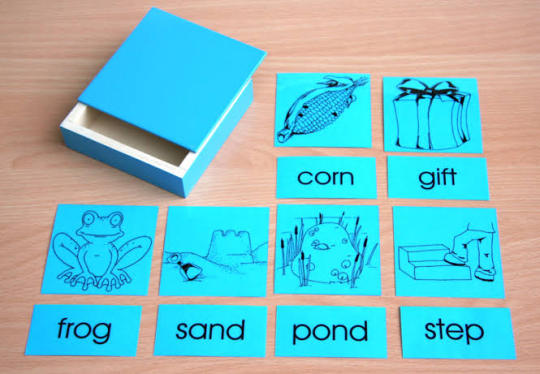
3. Mind Maps:
Mind maps are graphical representations that visually organize information around a central theme. In language education, they serve as dynamic tools for brainstorming, structuring ideas, and revealing relationships between words or concepts. Mind maps stimulate creative thinking and enhance memory retention by providing a holistic view of language elements.

4. Creative Learning Materials:
Creative learning materials encompass a variety of inventive resources designed to make language learning engaging and effective. These may include games, puzzles, role-playing activities, and hands-on projects. By integrating creativity into language education, these materials promote active participation and reinforce language skills in a lively and memorable way.
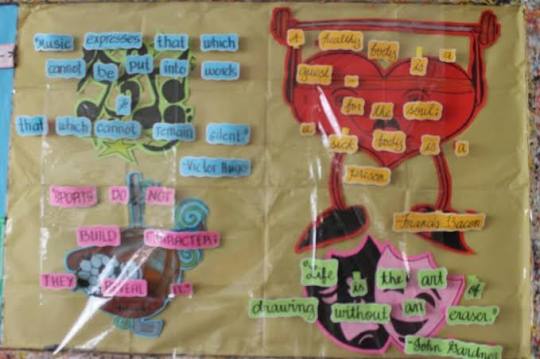
5. Story Boards:
Storyboards are sequential visual representations that break down a narrative into key scenes or events. In language teaching, storyboards facilitate storytelling and language production. Learners can use them to plan, illustrate, and present narratives, enhancing their linguistic abilities while fostering creativity and storytelling skills. Storyboards provide a structured framework for language learners to express themselves in a narrative format.

Modern Language Teaching Materials
Imagine a futuristic language learning experience where sleek, holographic language modules materialize in the air, seamlessly blending technology and education. These avant-garde materials use augmented reality to project interactive lessons, where students can virtually explore language landscapes, converse with lifelike avatars, and manipulate 3D linguistic constructs. Each module is a digital masterpiece, adapting to individual learning styles and dynamically responding to progress. Gamified challenges, real-world simulations, and AI-driven feedback transform language acquisition into an immersive adventure. This cutting-edge approach to language teaching materials not only embraces innovation but sparks a sense of curiosity and excitement, propelling learners into a technologically enriched linguistic journey.
Examples of Modern Language Teaching Materials:
1. Interactive Apps:
Cutting-edge language teaching materials often include interactive apps that engage learners through gamified exercises, real-life scenarios, and personalized feedback. These apps cater to various proficiency levels, offering dynamic content and adaptive learning paths, making language acquisition both enjoyable and effective.

2. Augmented Reality (AR) Flashcards:
Modern language teaching embraces AR flashcards that bring static images to life. By using a smartphone or tablet, learners can hover over these cards, triggering immersive experiences. For instance, pointing a device at a vocabulary card might generate 3D models, pronunciation guides, or interactive quizzes, enhancing the overall learning engagement.

3. Online Simulations and Virtual Reality (VR):
Language teaching materials now leverage online simulations and VR experiences. These immersive environments enable learners to practice language skills in realistic scenarios, such as ordering food in a restaurant or navigating a foreign city. VR enhances cultural understanding and fosters practical language application.
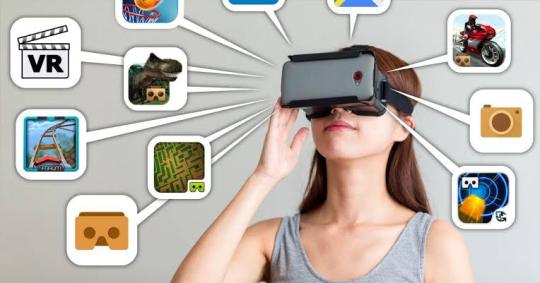
4. Authentic Multimedia Texts:
Contemporary language materials incorporate authentic multimedia texts like podcasts, vlogs, and news clips. These real-world examples expose learners to diverse accents, colloquial expressions, and current events, promoting cultural awareness and providing relevant context for language acquisition.

5. Digital Collaborative Platforms:
Language teaching materials often include digital collaborative platforms where students can engage in virtual language exchange, collaborative projects, and real-time communication. These platforms facilitate interaction with native speakers, peer collaboration, and authentic language use, breaking down geographical barriers and enriching the learning experience.

Advantages and Disadvantages of Traditional Language Teaching Materials
Traditional language teaching materials, such as textbooks and chalkboards, offer a structured foundation and can be cost-effective, but they may lack dynamism and struggle to capture students' attention in today's tech-savvy world. On the other hand, modern materials, like interactive apps and virtual reality simulations, bring language learning to life with immersive experiences, catering to diverse learning styles. These contemporary tools facilitate real-world language application, foster cultural understanding, and often provide immediate feedback. However, the reliance on technology can pose challenges, including access disparities and potential distractions. Striking a balance between the strengths of traditional and modern materials is crucial for creating a well-rounded language learning environment that combines the fundamentals of grammar and vocabulary with the engagement and authenticity offered by innovative technologies.
Advantages of Traditional Language Teaching Materials:
Tangible Resources:
Advantage: Physical textbooks, worksheets, and flashcards offer tangible resources that are easily accessible in various learning environments, providing a consistent reference point for students.
Cost-Effective:
Advantage: Traditional materials, such as printed textbooks, can be cost-effective compared to digital alternatives, making them accessible to a broader range of students.
Ease of Use:
Advantage: Traditional materials are often straightforward and easy to use, requiring minimal technical expertise. They are suitable for classrooms with limited access to technology.
Established Pedagogy:
Advantage: Many traditional materials are based on proven pedagogical principles, with structured lessons and exercises designed to support sequential language learning.
Minimal Technology Dependency:
Advantage: Traditional materials do not rely on technology, making them reliable in settings where technical resources may be limited or unreliable.
Disadvantages of Traditional Language Teaching Materials:
Limited Interactivity:
Disadvantage: Traditional materials may lack the interactive and dynamic features that modern learners, accustomed to digital engagement, find motivating and effective.
Static Content:
Disadvantage: Traditional materials often provide static content, which may become outdated or fail to capture the dynamic and evolving nature of language, especially in terms of current cultural references or idiomatic expressions.
Environmental Impact:
Disadvantage: The production and distribution of physical materials contribute to environmental concerns, such as deforestation and energy consumption. Digital alternatives are often considered more eco-friendly.
Limited Accessibility:
Disadvantage: Traditional materials may be less accessible for learners with diverse needs, such as those requiring adaptive technologies or alternative formats.
Less Engagement:
Disadvantage: Traditional materials might struggle to maintain the engagement of modern learners who are accustomed to interactive and multimedia-rich content, potentially leading to decreased interest and motivation.
Advantages of Modern Language Teaching Materials:
Engagement and Motivation:
Advantage: Modern materials, often utilizing technology and interactive elements, capture learners' interest and motivation, making language learning more enjoyable.
Real-life Context:
Advantage: Multimedia content like videos, podcasts, and virtual reality simulations provide authentic, real-life language contexts, aiding learners in understanding practical language usage.
Personalization:
Advantage: Many modern materials allow for personalized learning paths, catering to individual needs and adapting to different learning styles, pacing, and proficiency levels.
Accessibility:
Advantage: Digital materials and online platforms make language learning more accessible, allowing learners to engage anytime, anywhere, breaking down traditional barriers to education.
Interactive Feedback:
Advantage: Technology-enabled materials often provide instant and interactive feedback, helping learners correct pronunciation, grammar, and vocabulary in real-time.
Disadvantages of Modern Language Teaching Materials:
Dependency on Technology:
Disadvantage: Overreliance on technology can be a drawback, as not all learners may have access to the required devices or stable internet connections.
Lack of Personal Interaction:
Disadvantage: Some modern materials may prioritize individual learning over face-to-face interactions, potentially diminishing opportunities for authentic verbal communication and interpersonal skills development.
Cost and Accessibility:
Disadvantage: Advanced technology-based language materials can be costly, and not all educational institutions or learners may have the financial means to access them, creating disparities in educational resources.
Potential Distraction:
Disadvantage: Technology-integrated materials may introduce distractions, diverting learners' attention from the primary language learning objectives.
Technological Obsolescence:
Disadvantage: Rapid advancements in technology may lead to the obsolescence of certain language teaching materials, requiring continuous updates and investments to stay current.
2 notes
·
View notes
Text

🌊 Embracing the Colors of the Mediterranean 🌅
Hello, fellow creative souls! 🎨 My name is Marina, and I'm a passionate graphic designer hailing from the beautiful land of Greece. 🇬🇷 The enchanting Mediterranean colors and the rich cultural tapestry that surrounds me have infused my creativity with boundless inspiration.
I believe that every design is a canvas on which emotions, stories, and ideas come to life. 💡 With a keen eye for detail, I embark on a journey to transform ordinary concepts into captivating visuals that leave a lasting impression.
In my world, Adobe's suite of design tools is my magic wand, granting me the power to craft striking designs that dance harmoniously with brand guidelines. From Photoshop to Illustrator, Adobe XD to InDesign, and even the versatile Canva platform, I wield these tools with finesse to create a wide range of impressive artworks.
📣 One of my passions is crafting engaging social media campaigns that breathe new life into brands. Through careful planning and execution, I've had the privilege to enhance brand visibility and foster meaningful connections with audiences. The art of copywriting and content marketing adds the final brushstroke, making each campaign a powerful storytelling experience.
As I step into the Tumblr world, I'm thrilled to share my creative journey with all of you. 🌟 From behind-the-scenes insights to design tips and tricks, I'll be your guide into the mesmerizing realm of colors and images.
Let's embark on this adventure together, where the Mediterranean spirit weaves its magic into every pixel. 🌊🌅 Join me as we explore the boundless possibilities of graphic design and celebrate the beauty of culture through creativity!
If you have any design dreams or topics you'd like to explore, drop a comment below! Let's connect and inspire each other on this artistic voyage. 🚀
4 notes
·
View notes
Text
unlearn academy video editing
Video editing at Unlearn Institute focuses on empowering students with the technical and creative skills needed to excel in the dynamic field of video production. The institute offers a comprehensive curriculum designed for beginners to advanced learners, guiding them through the use of industry-standard software and editing techniques. Students are introduced to the fundamentals of video editing, including cutting, trimming, color correction, sound design, and special effects. They also explore more advanced concepts such as motion graphics, visual storytelling, and non-linear editing.
The hands-on training at Unlearn Institute ensures that students develop practical skills by working on real-world projects. Expert instructors, who are experienced professionals in the field, provide personalized feedback and mentorship, helping students refine their craft. Whether students aspire to work in film, television, social media content, or advertising, Unlearn Institute's video editing program prepares them for various career opportunities in the media industry.
Additionally, Unlearn Institute places a strong emphasis on creativity and innovation, encouraging students to experiment with different editing styles and techniques to develop a unique voice as editors. The program also covers the business side of video production, equipping students with the knowledge needed to navigate the industry. By the end of the course, students are ready to take on professional video editing roles, armed with a portfolio that showcases their abilities to create high-quality, engaging visual content.
0 notes
Text
Animation Courses in Kochi: Unleash Your Creativity
Animation is a thriving field that blends creativity with technology, offering endless opportunities for aspiring artists and storytellers. In Kochi, a bustling city known for its cultural heritage and modern outlook, the demand for skilled animators is growing rapidly. With the rise of animation in movies, gaming, advertising, and web content, pursuing an animation course in Kochi can be your gateway to a rewarding career in this dynamic industry.
Why Choose Animation as a Career?
The animation industry is experiencing exponential growth, not just in India but globally. Whether it's creating stunning visuals for blockbuster movies or designing engaging characters for video games, animators are at the forefront of digital storytelling. With advancements in technology like augmented reality (AR) and virtual reality (VR), the scope for animation professionals is expanding further.
An animation course equips students with the technical skills and artistic vision required to excel in this competitive industry. From learning software tools like Adobe Animate, Autodesk Maya, and Blender to mastering storytelling techniques, animation courses provide a comprehensive curriculum to prepare students for diverse roles such as 2D/3D animator, character designer, storyboard artist, and more.
DreamZone: A Hub for Creative Skill Development
DreamZone is a creative skill development initiative of CADD Centre Training Services Private Limited, a diversified global network of creative, engineering, and management development institutes. Founded in 2005, DreamZone has emerged as a premier institution offering specialized training in animation, graphic design, interior design, fashion design, and other creative domains. With 80 centers across India, including Kochi, DreamZone is committed to nurturing talent and fostering innovation.
At DreamZone, the focus is on experiential learning, blending theory with practical application. Students get hands-on training using state-of-the-art tools and technologies, guided by experienced faculty members who bring industry expertise to the classroom. DreamZone’s animation courses are designed to empower students with the skills and confidence to excel in the competitive creative industry.
Animation Courses Offered at DreamZone Kochi
DreamZone Kochi offers a variety of animation courses tailored to meet the needs of beginners and advanced learners alike. These programs are crafted to provide a strong foundation in animation principles while allowing students to specialize in areas of interest. Some of the key courses include:
Certificate Courses in Animation
Short-term courses focusing on specific animation skills, such as 2D animation, 3D modeling, or VFX.
Ideal for professionals looking to upskill or students exploring animation as a career option.
Diploma in Animation
Comprehensive programs covering the entire animation pipeline, from conceptualization to production.
Includes modules on character design, rigging, lighting, and rendering.
Advanced Diploma in Animation and VFX
An intensive program designed for students aiming to specialize in high-end animation and visual effects.
Focuses on industry-relevant techniques and software tools.
Specialized Courses
Courses tailored to specific industry needs, such as game design, motion graphics, and AR/VR animation.
Key Features of DreamZone’s Animation Courses
Industry-Standard Tools: Training on software like Maya, 3ds Max, ZBrush, and Unity.
Experienced Faculty: Mentors with real-world industry experience.
Live Projects: Opportunities to work on real-time projects to build a strong portfolio.
Placement Support: Assistance in securing internships and jobs with leading animation studios and production houses.
Creative Environment: Collaborative learning spaces that inspire creativity and innovation.
Why Choose Kochi for Animation Courses?
Kochi is emerging as a hub for digital and creative industries. The city’s vibrant art and culture scene, coupled with its growing IT infrastructure, makes it an ideal place for aspiring animators. With institutions like DreamZone offering world-class training, students in Kochi have access to top-notch resources and networking opportunities.
Additionally, the city’s proximity to major animation and gaming studios in cities like Bangalore and Chennai provides an added advantage for job seekers. Kochi’s thriving media and entertainment industry also offers ample opportunities for freelancers and independent artists.
Career Opportunities After Animation Courses
Completing an animation course opens up a plethora of career opportunities. Some of the popular roles in the animation industry include:
2D/3D Animator
Storyboard Artist
Character Designer
VFX Artist
Game Designer
Motion Graphics Artist
AR/VR Developer
The demand for skilled animators is not limited to the entertainment industry. Sectors like education, healthcare, and advertising are increasingly leveraging animation to create engaging content, broadening the scope for animation professionals.
Conclusion
Animation is more than just a career; it’s an art form that brings imagination to life. By enrolling in an animation course at DreamZone Kochi, Animation Courses in kochi you’ll gain the skills, knowledge, and confidence to transform your creative ideas into reality. Whether you aspire to work in a top animation studio or start your own creative venture, the training and mentorship at DreamZone will set you on the path to success. With a robust curriculum, industry exposure, and a supportive learning environment, DreamZone Kochi is your destination for mastering the art of animation. Unleash your creativity and embark on a fulfilling journey in the world of animation today!
#Fashion Designing courses in kochi#Interior Design courses in kochi#Graphics designing courses in kochi#Best Fashion Designing courses in kochi#Best Animation Courses in kochi
0 notes
Text
content marketing for traffic
Crafting Success Stories: Unleashing the Potential of Content Marketing for Ecommerce and Business Websites by New India Solutions
In the fast-evolving digital landscape, content marketing has emerged as a pivotal strategy for businesses aiming to engage, convert, and retain their target audience. At New India Solutions, we understand the unique demands of ecommerce and business websites in the competitive US market. Our tailored content marketing services are designed to not only capture attention but also drive meaningful results. In this comprehensive guide, we delve into the key facets of our content marketing approach, showcasing how we can elevate your brand's narrative and boost your online presence.
1. Strategic Content Planning: Aligning Your Message with Your Audience
Effective content marketing begins with a well-defined strategy. Our team conducts thorough research to understand your business, industry, and target audience. By aligning your message with the needs and preferences of your audience, we craft a strategic content plan that serves as the foundation for a successful campaign.
2. Engaging and SEO-Optimized Content: Fueling Discoverability
Compelling content is at the heart of any successful content marketing strategy. We specialize in creating engaging and SEO-optimized content that not only resonates with your audience but also enhances your website's visibility on search engines. From blog posts and product descriptions to informative guides, our content is crafted to captivate and convert.
3. Visual Storytelling: Enhancing Impact with Multimedia
In a visually-driven online landscape, visual storytelling is paramount. Our content marketing services extend beyond text to include visually appealing graphics, infographics, and videos. By integrating multimedia elements, we amplify the impact of your brand message, fostering a deeper connection with your audience and setting your brand apart from the competition.
4. Email Marketing Campaigns: Nurturing Customer Relationships
Email remains a powerful channel for building and nurturing customer relationships. Our content marketing services include strategic email campaigns that deliver personalized and relevant content to your audience. From newsletters to promotional emails, we ensure your brand stays top-of-mind and fosters long-term customer loyalty.
5. Social Media Integration: Amplifying Reach and Engagement
Harness the power of social media to amplify your content reach. Our team integrates social media into your content marketing strategy, ensuring your content is shared across platforms to reach a wider audience. By fostering engagement and interactions, we help build a community around your brand, driving organic growth and increasing brand advocacy.
6. Analytics and Optimization: Data-Driven Success
Understanding the impact of your content is crucial for ongoing success. Our content marketing services include comprehensive analytics and optimization strategies. We track key performance metrics, analyze user behavior, and refine our approach based on data-driven insights, ensuring your content marketing campaign continually evolves for maximum impact.
In conclusion, New India Solutions stands as your trusted partner in unlocking the true potential of content marketing for ecommerce and business websites. Our tailored approach, from strategic planning to engaging content creation, ensures that your brand's story is not only told but resonates with your audience, driving tangible results. Elevate your brand narrative with our content marketing services and embark on a journey towards sustained online success.
0 notes
Text
Why High-Quality Game Art Matters in the Competitive Gaming Industry

The gaming industry is a booming sector, with millions of players worldwide demanding immersive experiences and captivating visuals. In this fiercely competitive market, high-quality game art is not just a luxury—it’s a necessity. From detailed 3D modeling for games to realistic 3D game environments, exceptional game art can set a title apart from the competition and captivate players at first glance. Here’s why investing in superior game art is crucial for success in today’s gaming landscape.
1. First Impressions Matter
In a crowded marketplace, the first impression often determines whether a player engages with a game or moves on to the next. High-quality visuals act as the gateway to your game, drawing players in and sparking their curiosity.
Eye-Catching Graphics: Stunning game assets like character models, props, and textures grab attention in trailers, screenshots, and promotional materials.
Immersion at First Sight: Realistic and meticulously crafted 3D game environments transport players into your game world, making them want to explore further.
A visually appealing game sets the tone for an engaging experience and increases the likelihood of capturing your audience’s interest.
2. Enhances Player Immersion
Game art goes beyond aesthetics; it plays a pivotal role in creating a believable and immersive world. Players are more likely to connect with a game that feels real and resonates emotionally.
Realistic 3D Modeling: High-detail character models with expressive animations make in-game interactions more engaging.
Dynamic Environments: Thoughtfully designed 3D game environments with intricate details and atmospheric effects immerse players in the game’s story and setting.
Consistency in Art Style: Cohesive visuals maintain immersion by ensuring every asset, from characters to backgrounds, fits seamlessly within the game world.
When players feel fully immersed, they are more likely to invest time and emotion into your game, boosting retention and loyalty.
3. Differentiates Your Game in the Market
With thousands of games released every year, standing out is a challenge. High-quality game art can be the differentiating factor that helps your game gain visibility and popularity.
Memorable Visuals: Unique and visually striking game assets can make your game iconic, ensuring it lingers in players’ minds long after they’ve played.
Brand Identity: A distinct art style helps establish a recognizable brand, making your game easily identifiable across platforms and promotions.
Competitive Edge: In genres saturated with similar mechanics, superior visuals can elevate your game above competitors.
In a sea of options, exceptional art gives your game the advantage it needs to capture attention and build a loyal fan base.
4. Supports Storytelling and Gameplay
Game art is a powerful storytelling tool, conveying narratives and emotions without words. It also enhances gameplay by guiding players and enriching their experience.
Visual Storytelling: Elements like character designs, architecture, and lighting contribute to the game’s narrative, helping players understand the world and its lore.
Functional Design: Well-designed 3D game environments provide intuitive navigation, ensuring players can focus on gameplay without frustration.
Emotional Impact: Art styles tailored to the game’s theme evoke specific emotions, amplifying the overall experience.
By combining functionality with artistry, high-quality visuals ensure that players remain engaged and invested in your game’s journey.
5. Drives Monetization and Success
In the gaming industry, art quality directly impacts a game’s commercial success.
Increased Sales: Games with appealing visuals attract more buyers, whether through digital storefronts, crowdfunding campaigns, or retail sales.
In-Game Purchases: High-quality skins, character models, and other game assets can drive microtransactions in free-to-play models.
Positive Reviews: Players and critics alike value polished visuals, leading to better reviews and higher rankings on platforms.
A visually stunning game not only attracts players but also keeps them engaged, maximizing both initial sales and long-term revenue streams.
Final Thoughts
In today’s competitive gaming industry, high-quality game art is more than just a visual treat—it’s a cornerstone of success. From the intricate 3D modeling for games to the immersive 3D game environments, every detail contributes to creating a memorable and engaging experience for players.
Investing in top-tier game art pays dividends in player retention, market differentiation, and financial performance. As the demand for visually captivating games continues to rise, developers who prioritize exceptional art will find themselves ahead of the curve, ready to captivate audiences and achieve lasting success.
0 notes
Text
2D Game Design Basics: Crafting Worlds One Pixel at a Time
2D game design, despite the rise of 3D graphics, remains a vibrant and engaging form of game development. From classic platformers to modern indie darlings, 2D games captivate players with their unique charm, artistic expression, and accessibility. At MAAC Academy, we recognize the enduring appeal of 2D game design and offer comprehensive courses to aspiring developers. Understanding the fundamentals of 2D game design is crucial for creating compelling and enjoyable experiences.
Core Elements of 2D Game Design
1. Concept and Genre: Defining the core idea and genre of the game is the first step. Whether it's an action-packed platformer, a puzzle-solving adventure, or a story-driven RPG, the concept and genre guide the overall design and mechanics.
2. Visual Style and Art: The visual style sets the tone and atmosphere of the game. Pixel art, vector graphics, or hand-drawn illustrations contribute to the game's aesthetic and appeal.
3. Gameplay Mechanics: The core rules and interactions that govern the game. These mechanics define how players interact with the game world, overcome challenges, and achieve objectives.
4. Level Design: Crafting engaging and challenging levels that guide the player's progression and offer a variety of experiences. Level design involves creating layouts, placing obstacles, and incorporating puzzles and challenges.
5. Character Design: Creating memorable and relatable characters that players can connect with. Character design involves visual appearance, personality traits, and abilities.
6. Sound Design: Utilizing sound effects and music to enhance the gameplay experience and create atmosphere. Sound design plays a crucial role in immersing players and providing feedback.
7. User Interface (UI): Designing intuitive and user-friendly menus, health bars, and other visual elements that provide information to the player.
Key Considerations in 2D Game Design
Simplicity and Clarity: 2D games often thrive on simple and intuitive mechanics that are easy to understand and master.
Visual Communication: Clear visual cues and feedback are essential in 2D games to guide players and communicate information effectively.
World Building: Creating a believable and immersive game world through visual design, environmental details, and storytelling elements.
Challenge and Progression: Balancing the difficulty curve and providing a sense of progression to keep players engaged and motivated.
Player Agency: Giving players meaningful choices and control over their actions to enhance their sense of involvement.
Tools and Technologies for 2D Game Design
Game Engines: Popular game engines like Unity, Unreal Engine, and Godot offer powerful tools and resources for 2D game development.
2D Art Software: Programs like Adobe Photoshop, GIMP, and Aseprite are essential for creating pixel art, illustrations, and animations.
Level Editors: Built-in or dedicated level editors allow designers to create and iterate on level layouts efficiently.
Sound Design Software: Tools like Audacity and FL Studio enable the creation and implementation of sound effects and music.
The Evolution of 2D Game Design
While rooted in classic pixel art and side-scrolling gameplay, 2D game design continues to evolve. Modern 2D games incorporate:
Advanced Visuals: Techniques like parallax scrolling, dynamic lighting, and visual effects create depth and visual interest.
Innovative Mechanics: New gameplay mechanics and genres push the boundaries of 2D game design, offering fresh and unique experiences.
Narrative Depth: Storytelling and character development play an increasingly important role in 2D games, creating emotional connections with players.
Hybrid Approaches: Combining 2D and 3D elements to create unique visual styles and gameplay experiences.
The Future of 2D Game Design
2D game design remains a vibrant and evolving field, with a bright future ahead. We can expect to see:
Continued Innovation: New genres, mechanics, and visual styles will continue to emerge, pushing the boundaries of 2D game design.
Accessibility and Inclusivity: 2D games often offer a lower barrier to entry for both players and developers, fostering a diverse and inclusive community.
Nostalgia and Remakes: Remakes and reimaginings of classic 2D games will continue to appeal to nostalgic players and introduce new audiences to timeless experiences.
Indie Game Renaissance: The accessibility of 2D game development tools empowers independent developers to create unique and innovative games.
Conclusion
2D game design, with its focus on simplicity, clarity, and visual communication, offers a unique and engaging form of interactive entertainment. By understanding the fundamentals, utilizing the right tools, and embracing innovation, aspiring game developers can create captivating 2D worlds that resonate with players and leave a lasting impact. MAAC Institute provides aspiring game developers with the skills and knowledge needed to thrive in this exciting field. As technology advances and creative boundaries are pushed, the future of 2D game design promises a vibrant and diverse landscape of interactive experiences.
0 notes
Text
Outsource PowerPoint Presentation Service for Professional Designs
Creating a professional and engaging PowerPoint presentation is crucial for effectively communicating your ideas. Whether you're pitching to investors, delivering a business update, or preparing a class lecture, a visually appealing and well-structured presentation can make all the difference. But not everyone has the time, skills, or resources to create these presentations from scratch. That’s where outsourcing your PowerPoint presentation service can be a game-changer.
Why Outsource PowerPoint Presentation Services?
When you outsource powerpoint presentation service, you're tapping into the expertise of professional graphic designers and presentation specialists who understand the nuances of visual storytelling. They can help you craft presentations that are not only visually stunning but also aligned with your message, goals, and brand.
Save Time and Focus on Your Core Tasks Creating a PowerPoint presentation from scratch can be time-consuming, especially if you're aiming for a polished and professional look. Outsourcing the task frees up your time to focus on other important tasks, such as preparing for your meeting or working on the content itself. Instead of getting bogged down in design details, you can leave it to the professionals to deliver a high-quality presentation.
Expertise in PowerPoint Graphic Design Professional PowerPoint designers are well-versed in creating visually engaging slides that balance aesthetics with functionality. They can design slides that are easy to follow, using the right fonts, colors, and imagery to ensure your message is communicated clearly. PowerPoint graphic design professionals understand how to break down complex information into digestible chunks while maintaining a cohesive design theme throughout the presentation.
Consistent Branding Outsourcing your PowerPoint design ensures that the presentation remains consistent with your branding. Professional designers are skilled at incorporating your company’s logo, color scheme, fonts, and style guide into the presentation. This consistency strengthens your brand’s identity and makes your presentation look polished and professional.
Benefits of Professional PowerPoint Design
Opting for a professional PowerPoint design service comes with several key benefits:
Visual Appeal That Captivates Your Audience The visual appeal of a PowerPoint presentation plays a critical role in keeping your audience engaged. A professionally designed presentation uses eye-catching graphics, smooth animations, and a balanced layout to captivate viewers without overwhelming them with too much information. This keeps the audience engaged and ensures they are paying attention to the most important parts of your presentation.
Expertise in PowerPoint Features Professional designers are familiar with the full range of PowerPoint features, including slide transitions, animations, and data visualizations. They know how to incorporate these features in ways that enhance the presentation without being distracting. Whether it's adding dynamic charts to present data or using animations to highlight key points, they have the skills to make the presentation come to life.
High-Quality, Custom Designs Outsourcing to a PowerPoint design service ensures you get a custom, high-quality design that fits your specific needs. From custom-made templates to personalized graphics, professional designers create presentations that are unique and tailored to your goals. They also ensure that the design aligns with your message, making it easier for your audience to follow along.
Choosing the Right PowerPoint Design Service
When selecting a PowerPoint design service, you want to ensure that you choose a team with the experience and expertise to deliver exceptional results. Look for a company that understands your needs, listens to your goals, and has a portfolio that demonstrates their ability to create visually compelling presentations.
One such service is Visual Spiders, a trusted name in professional PowerPoint design. With a team of expert designers, they can help you create custom presentations that are not only visually impressive but also aligned with your brand identity. Whether you're looking for simple slide designs or complex animations and graphics, they offer solutions tailored to your needs.
Final Thoughts
Outsourcing your PowerPoint presentation service to professionals can significantly enhance the quality of your presentations while saving you time and effort. From PowerPoint graphic design to professional PowerPoint design, outsourcing ensures that your presentation is both visually stunning and effective in delivering your message. If you want to make a lasting impact with your next presentation, consider reaching out to a reputable design service like Visual Spiders, where they specialize in creating tailor-made PowerPoint designs that leave a lasting impression.
presentation design agency
Powerpoint graphic design
Powerpoint Design
0 notes
Text
Creating a Winning Investor Pitch Deck: Why You Need Professional Help

TL;DR
A professional pitch deck design agency can elevate your investor pitch with compelling storytelling, sleek visuals, and expert insights. They save you time, refine your content, and ensure your presentation resonates with investors, boosting your chances of securing funding. Focus on clarity, simplicity, and a strong call to action for the best results.
Securing funding is one of the most critical steps for startups and businesses looking to scale. A compelling investor pitch deck can mean the difference between a solid “yes” or a polite “no, thank you.” This is where partnering with a pitch deck design agency or an investor pitch deck company becomes invaluable.
Creating a pitch deck isn't just about throwing together some slides; it’s about storytelling, strategy, and design expertise. Let’s explore why hiring an investor pitch deck agency can give you a competitive edge, how professional pitch deck design services make a difference, and tips for crafting a pitch deck that investors simply can’t ignore.
What Is an Investor Pitch Deck?
An investor pitch deck is a concise presentation designed to provide potential investors with a snapshot of your business. It typically includes 10–20 slides covering essential information such as:
Your company’s mission and vision: What are you trying to achieve? What drives your company forward?
The problem you’re solving: Clearly outline the pain point in the market that your product or service addresses.
Your unique solution: Explain why your approach is better than existing alternatives.
Market opportunity: Demonstrate the size and scope of the opportunity, showcasing strong growth potential.
Business model: Detail how your company plans to generate revenue and sustain itself financially.
Traction and milestones: Highlight key achievements, such as customer acquisition, revenue, or partnerships.
Team overview: Showcase the talent and expertise of your team, emphasizing their ability to execute the vision.
Financial projections: Provide realistic forecasts to build confidence in your business’s viability.
Funding requirements: Clearly state how much capital you’re seeking and how it will be used.
Why You Need a Professional Investor Pitch Deck Agency
You’ve got a great idea, but if it’s not presented in the best light, it may fall flat. A professional pitch deck design agency ensures your ideas are not just heard but remembered. Here’s how:
1. Expertise in Storytelling
Creating a story that resonates with investors is no small feat. Professional agencies specialize in developing narratives that connect emotionally while emphasizing your business’s potential. They delve deep into your company's journey, highlight the market problem, and seamlessly guide investors through your solution and its impact. This blend of logic and emotion builds trust and interest, encouraging investors to envision themselves as part of your success story.
2. High-Impact Design
Investors sift through numerous pitch decks, so first impressions are everything. A visually appealing design is crucial to making your presentation stand out. Agencies use modern design principles, incorporating consistent typography, compelling color schemes, and custom graphics. They also ensure that your slides are visually engaging without overwhelming your audience, maintaining a delicate balance that keeps investors focused on your message.
3. Industry-Specific Knowledge
Different industries have unique challenges and opportunities. A seasoned investor pitch deck company understands the nuances of various sectors and tailors your presentation accordingly. For instance, a SaaS startup's pitch deck may focus heavily on metrics like customer lifetime value and churn rate, while a healthcare startup might emphasize regulatory milestones and clinical trial results. This customization ensures that your pitch aligns with what investors expect and need to see.
Key Benefits of Hiring a Pitch Deck Design Agency
Still wondering if it’s worth the investment? Here are some clear advantages:
Time-Saving
Crafting a pitch deck from scratch can be incredibly time-consuming, especially if you’re juggling other responsibilities like product development or investor meetings. A pitch deck design agency streamlines the process, saving you countless hours. They handle everything from content refinement to slide design, allowing you to focus on your core business activities. In the fast-paced world of startups, this time efficiency can be invaluable.
Access to Expert Designers
A great design goes beyond aesthetics—it enhances comprehension. Agencies employ skilled designers who specialize in turning raw data into digestible visuals. From eye-catching charts to intuitive infographics, they ensure that your data is presented in a way that’s both informative and visually appealing. This professional touch elevates your deck, making it easier for investors to understand and remember key points.
Polished Content
Even the most groundbreaking ideas can fall flat if they’re poorly communicated. Professional agencies help you craft concise, impactful messaging that resonates with investors. They focus on refining your pitch, ensuring every word, bullet point, and headline serves a purpose. This polished content not only makes your deck more professional but also keeps investors engaged throughout the presentation.
Increased Credibility
Investors are more likely to take you seriously if your pitch deck exudes professionalism. A clean, well-structured deck signals that you’ve put thought and effort into your presentation. It reflects positively on your overall approach to business, building trust and credibility. By working with an investor pitch deck agency, you’re sending a clear message: you’re serious about securing their investment.
What Makes a Great Investor Pitch Deck?
Whether you’re working with a pitch deck design agency or creating one in-house, these elements are non-negotiable:
1. Simplicity
Investors don’t have time to decode complex slides. Your deck should convey its message quickly and clearly. Focus on one key idea per slide, using minimal text and impactful visuals. A professional agency ensures that even the most intricate data is presented in an easily digestible format, helping you maintain clarity without oversimplifying.
2. Clarity of Vision
Your vision is the cornerstone of your pitch. Investors need to see not only what you’re aiming to achieve but also how you plan to get there. A clear articulation of your mission, combined with a realistic roadmap, builds investor confidence. Agencies help you refine this vision into concise, compelling statements that resonate.
3. Data-Driven Insights
Numbers tell a story of their own. Whether it’s market research, revenue projections, or customer acquisition metrics, data adds weight to your claims. Agencies specialize in turning dry numbers into visually engaging charts and graphs, ensuring your insights are both credible and captivating.
4. Visual Consistency
A cohesive design ties your pitch deck together, making it easier to follow and more professional. This includes a consistent color palette, font choices, and design elements. Agencies use these principles to create a visually harmonious presentation that reinforces your brand identity.
5. A Strong Call to Action
Your pitch deck should leave no room for ambiguity. End with a clear ask—whether it’s funding, a partnership, or strategic advice. A strong call to action ensures that investors know exactly what you need from them and why it’s worth their time.
How an Investor Pitch Deck Agency Transforms Your Vision
Let’s dive deeper into how agencies elevate your pitch deck:
Crafting a Compelling Story
Agencies work with you to uncover the essence of your business—your “why.” This goes beyond facts and figures to create an emotional connection with investors. By focusing on your company’s journey, market impact, and future potential, they craft a story that’s both logical and inspiring.
Simplifying Complex Information
Not all investors are industry experts, so simplicity is key. Agencies excel at distilling technical jargon and complex financials into clear, engaging slides. They know how to present information so that it’s understandable without losing depth, ensuring your pitch appeals to both novice and experienced investors.
Tailoring to the Audience
A one-size-fits-all approach rarely works. Agencies customize your pitch deck based on the specific type of investors you’re targeting. This ensures your deck speaks directly to their priorities, whether it’s scalability, innovation, or market dominance.
Conclusion: Invest in Success with Professional Pitch Deck Design Services
A well-crafted pitch deck can open doors to funding, partnerships, and growth opportunities. Whether you’re launching your first startup or scaling an established business, a professional pitch deck design agency can help you put your best foot forward. From compelling storytelling to stunning visuals, these experts ensure your message resonates with investors.
Don’t leave your funding opportunities to chance—partner with an experienced investor pitch deck company to create a presentation that stands out in a competitive market.
FAQs
1. What does a pitch deck design agency do?A pitch deck design agency specializes in creating visually engaging and strategically structured presentations that effectively communicate your business ideas to investors.
2. How much does it cost to hire an investor pitch deck company?Pricing varies depending on the agency and scope of work, but most agencies offer flexible packages tailored to startups’ needs.
3. What are the must-have slides in a pitch deck?Essential slides include your company overview, problem/solution, market opportunity, business model, traction, team, and financial projections.
4. Can I create a pitch deck without professional help?While it’s possible, hiring a professional agency ensures a polished and persuasive presentation that maximizes your chances of success.
5. How long should an investor pitch deck presentation be? Ideally, your pitch deck should take about 10–15 minutes to present, with time for Q&A afterward.
6. What makes a pitch deck stand out? A strong narrative, visually appealing design, and clear, data-driven insights make a pitch deck memorable.
0 notes
Text
From Concept to Reality: How Designers Turn Ideas into Shareable Social Content
Designers have always been at the forefront of transforming ideas into captivating visuals. Social media, with its ever-growing influence, demands shareable and engaging content that stands out. Using a combination of traditional techniques and modern tools, designers can create posts that not only reflect their concepts but also resonate with their audience. This article explores traditional content creation approaches and how innovative tools, like iPhone mockups, can enhance visual storytelling.
Social media content creation has evolved, but its core principle remains the same: connecting with an audience through compelling visuals. In the past, designers relied on manual sketches and basic graphics to convey their ideas. While effective, these methods lacked the dynamism and speed required for modern platforms. Today, tools like mockups have revolutionized the process, enabling designers to bring concepts to life quickly and professionally.

Traditional Methods of Presenting Concepts
Designers used to focus on detailed drawings, storyboards, and physical prototypes to present ideas. These methods were effective but time-consuming, especially for sharing on fast-paced platforms like Instagram or Twitter. While the traditional approach allowed for depth, it often fell short in terms of immediacy and adaptability for social media trends.
Despite these challenges, the foundational principles of traditional design—such as composition, color theory, and storytelling—remain vital. Modern designers can adapt these fundamentals to craft visually engaging content that thrives on social platforms.
How iPhone Mockups Enhance Shareability
iPhone mockups have become a designer’s best friend for showcasing mobile app screenshots and social media content. By presenting ideas within the context of a sleek device, designers make their concepts relatable and tangible. Mockups not only improve the visual appeal but also help clients and audiences envision the final product in a real-world scenario.
For instance, if you’re designing a mobile app interface, placing it within an iPhone mockup can illustrate its usability and aesthetic appeal. This approach can also work wonders for Instagram posts, where polished and professional visuals get higher engagement.

Step-by-Step Guide: Creating Shareable Social Content
Start with a Clear Concept Brainstorm your idea and outline the message you want to convey. Think about your audience and the platform you’re targeting—what works on Instagram might not work on LinkedIn.
Choose the Right Tools Platforms like MockupDaddy.com offer a wide range of professional mockups, including iPhone templates, to help visualize your ideas. Select one that aligns with your theme and branding.
Design with Engagement in Mind Incorporate visual elements like bold typography, vibrant colors, and user-friendly layouts. For example, mobile app screenshots can be enhanced with minimalistic backgrounds to keep the focus on functionality.
Optimize for Social Media Tailor your content to specific platform requirements. For Instagram, use square or vertical formats and add attention-grabbing captions. Use hashtags strategically to increase visibility.
Test and Iterate Before publishing, test your design across devices to ensure consistency. Gather feedback and tweak your content for maximum impact.
Modern Take: Blending Tradition and Innovation
Callout Box:
Old-Style Tip: Rely on hand-drawn sketches to conceptualize. Modern Alternative: Use digital tools like Adobe Illustrator or Figma for faster iterations and seamless sharing.
Traditional principles remain invaluable, but modern tools have amplified their reach and efficiency. By merging the old with the new, designers can cater to diverse audiences and platforms effortlessly.
Conclusion
Transforming ideas into shareable social content requires a blend of creativity, precision, and the right tools. While traditional design methods lay the groundwork, modern solutions like iPhone mockups make the process more efficient and impactful. By exploring professional mockup options at MockupDaddy.com, designers can streamline their workflow and craft visuals that engage and inspire. Embrace the best of both worlds to elevate your social media content strategy.
0 notes
Text
Graphic Design: The Best Course To Choose After Completing 12th
Graduating from school is an exciting moment in life, and a career in graphic design can be quite rewarding for people with an artistic leaning. There are several graphic design courses available, but choosing the best one might be difficult due to the variety of choices. Be relaxed, as through this blog, you will be able to look at what Incredible Point’s course offers and how it is the best fit for your creative vision and long-term objectives.
Know About Graphic Design First
Before getting into our specifics, let’s explore the essence of graphic design itself. It’s a captivating mix of artistic expression, strategic problem-solving, and technical expertise. Skilled graphic designers are the visual storytellers of our world, crafting compelling messages through a masterful combination of images, text, and layout across diverse platforms. From eye-catching logos and engaging social media graphics to user-friendly interfaces and sleek packaging, graphic designers leave their mark on nearly everything we encounter in our daily lives.
You Can Be A Design Prodigy
For someone with a keen eye for aesthetics, who finds joy in designing, and have a passion for visually communicating ideas, then a graphic design career path might be perfectly suited to your talents and interests. However, before going headfirst, consider these points:
Artistic Desire: Having a strong foundation for artistic sense can be essential. We help you explore your artistic skills with our Graphic Design Courses Institute in Delhi.
Basic Technical Skill: While technical skills can be learned, a basic comfort level with computers is beneficial. Moreover, our mentors help you learn the basics of graphics with their expertise and experience.
A Peek at Incredible Point’s Graphic Design Course
At Incredible Point, we offer graphic design courses with industry experts that cater to various needs and aspirations. Here’s a breakdown of some potential program elements to investigate:
Foundational Training: A strong foundation is very important. Our courses establish a solid understanding of core design principles like color theory, typography, composition, and layout.
Software Mastery: Graphic software like Adobe Photoshop, Illustrator, and InDesign are essential tools. Our Graphic designing course equips you with comprehensive training in this software.
Design Thinking Skill: This approach teaches you to strategically tackle design challenges. Ideally, our course in graphic design will guide you through understanding user needs, brainstorming creative solutions, and iterating on your designs to achieve optimal results.
Portfolio Building: Creating a compelling portfolio showcasing your best work is an important element in landing design jobs. We give Graphic design certification after the completion of our course, you’ll have an effective portfolio.
Why Choose Incredible Point?
Evaluating the reputation and expertise offered by Incredible Point is very important for you. Here are some key indicators to consider:
Industry-Recognized Instructors: The teacher here possesses extensive experience working within the design industry. They have been accomplishments and knowledge well-respected within the field.
Student Success Stories: You can see testimonials from our previous students who have transitioned into successful design careers or pursued further education in the field.
Placement Offers: Incredible Point provides placement offers after one completes their course. The placement is provided through our valuable industry connections and the student’s performance.
Conclusion
At Incredible Point, we don’t just offer courses but gateways to a thriving design career. Our comprehensive curriculum, from foundational training in core design principles to software mastery, equips you with the essential tools. We enhance your design thinking skills, guiding you to translate user needs into captivating solutions. We are the launchpad for your creative journey in the world of graphic design. Let us help you transform your artistic passion into a thriving career. To join us you can simply visit our website and contact us.
FAQs
What is design thinking, and how does it help with graphic design?
Design thinking teaches you to strategically approach design challenges. It involves understanding user needs, brainstorming solutions, and iterating on your designs for optimal results.
What makes Incredible Point’s instructors qualified?
Our instructors are industry veterans with extensive experience and expertise. You’ll learn from the best and gain valuable insights.
Does Incredible Point offer any career support after graduation?
Yes! We understand the importance of career readiness. We may offer resume workshops, portfolio reviews, and even placement opportunities through our industry connections.
What are some success stories of past students?
We encourage you to check out testimonials from our alumni who have transitioned into successful design careers or pursued further education.
How do I get started with a graphic design program at Incredible Point?
Visit our website! You can explore the different programs, learn more about the application process, and even contact us with any specific questions.

#best graphic design course in dwarka#graphic design course in dwarka#Graphic Design Courses Institute in Delhi
0 notes
Text
Graphic Designing Training Institute in Chandigarh
Graphic Designing: A Complete Guide to Enhance Your Visual Communication
Graphic designing plays a vital role in the digital and marketing world. From enhancing brand identity to creating engaging content, a well-executed graphic design can speak volumes about your business. This guide explores the essential aspects of graphic designing.
1. What is Graphic Designing?
Graphic design involves crafting visual content to convey messages. By using typography, color, imagery, and layout, designers create visually appealing graphics for digital and print media.
Synonyms:
Visual Design
Creative Design
Digital Art
Graphic Art
2. Types of Graphic Design
Understanding the various types of graphic design helps in choosing the right style for your needs.
Brand Identity Design: Logos, color schemes, and brand guides.
Marketing Design: Brochures, banners, and social media posts.
User Interface Design (UI): Web layouts, mobile apps, and software interfaces.
Publication Design: Magazines, eBooks, and newspapers.
Packaging Design: Product packaging that stands out.
3. Benefits of Professional Graphic Design
Investing in professional graphic design offers several advantages:
Brand Consistency: Ensures a uniform look across all platforms.
Increased Engagement: Eye-catching visuals attract and retain customer attention.
Better Communication: Simplifies complex information through visual storytelling.
4. Key Graphic Design Tools
Utilizing the right tools is essential for efficient and high-quality design work. Popular graphic design software includes:
Adobe Photoshop
Adobe Illustrator
Figma
Canva
5. Future Trends in Graphic Design
3D Design and Typography: Adding depth and realism to visuals.
Minimalism: Clean, simple designs that emphasize key elements.
Interactive Graphics: Engaging users with clickable and animated designs.
Conclusion
Graphic design is an essential tool for businesses looking to enhance their visual communication. With professional graphic design, you can create powerful, visually appealing content that resonates with your target audience.
0 notes